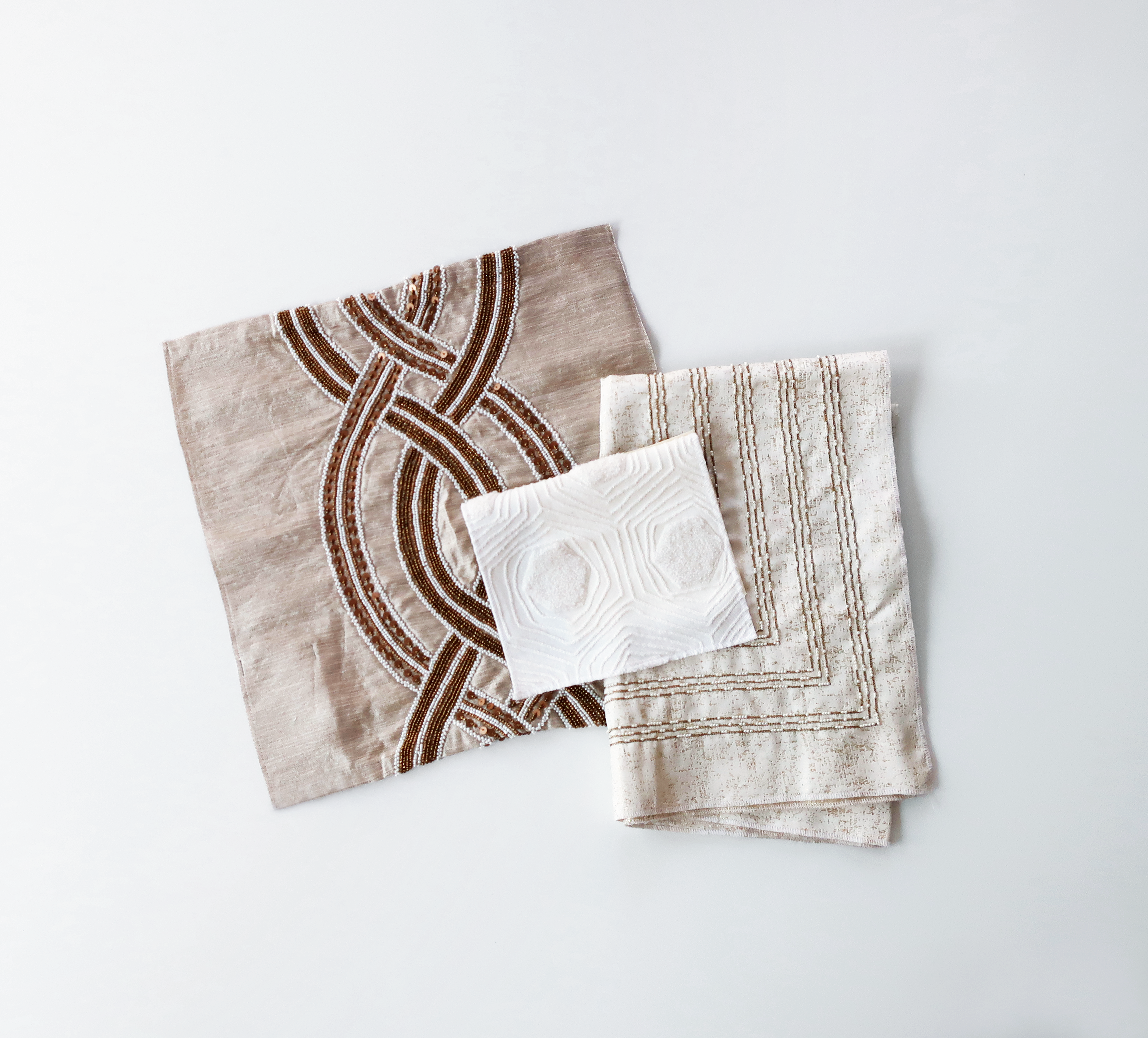Material Focus: Upholstery
The right upholstery can transform a space from ordinary to extraordinary. Whether you are revitalizing a beloved vintage chair or furnishing an entire living room, our guide aims to equip you with the knowledge and confidence to select upholstery that seamlessly integrates both aesthetic appeal and functional requirements.

Exploring Color
Choosing the right color for your upholstery involves understanding your space, considering the mood, and thinking about practicality. Start by evaluating the room’s existing color palette. Warm toned colors create a cozy atmosphere, while cooler colors evoke calmness. Consider timeless neutrals such as beige, gray, and white for longevity, and reserve trendy shades for easily replaceable accents.
Before committing, test fabric samples in your space to see how they look under different lighting conditions. By carefully considering these factors, you can choose an upholstery color that enhances your home’s aesthetic and stands the test of time.
Comparing Texture
Texture brings depth and dimension to a space, enhancing both its visual and tactile appeal. Varied texture is important in any interior, particularly when there is a neutral or pared-down palette. A monochromatic white space may feel cold or unwelcoming when the texture of the upholstery is not considered. Thoughtfully combining textures results in a much more balanced and intriguing look.

Consider the properties of different textiles for practical applications. Sheer fabrics like voile or chiffon are ideal for window treatments, allowing light to filter through. Heavier, textured fabrics like bouclé or tweed are perfect for cozy chairs and sofas, offering durability and comfort. By incorporating a variety of textures, you can create a layered, engaging environment.
" Apart from the rug in the room, the textiles used on furniture and window treatments tell a story and often create a mood. Perhaps light and bright linens or dark and moody mohairs, they really create an ambiance. Incorporating custom embroidery on the back of a piece of furniture can really heighten the experience and customization of a space. "— Jessica Iwaniec, Design Director

Performance Textiles
Material composition is key to understanding a textile’s durability. Fabrics made from natural fibers like cotton, linen, and wool are breathable and comfortable but may require special care. In contrast, synthetics such as polyester and acrylic are highly durable and resistant to stains and fading, making them ideal for outdoor and high traffic areas. Synthetics’ resistance to UV and mildew also helps ensure they maintain their appearance even in harsh conditions.

Specialty Textiles
Specialty fabrics such as silk have a luxe feel and delicate nature. Pure silk fabrics and those embellished with intricate embroidery can elevate a room’s aesthetic but are prone to wear and tear, thus making them ideal for small accents.
Think throw pillows, drapery, or accents on furniture. Its smooth texture and subtle sheen can make these pieces stand out, adding a sense of sophistication and refinement to your décor.